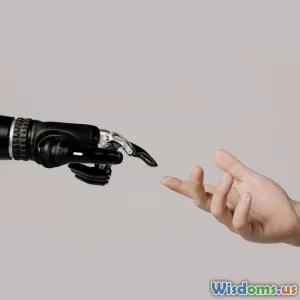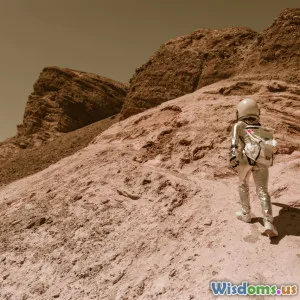
Imagining Tomorrow: Science Fiction's Role in Innovation
6 min read Explore how science fiction fuels innovation by inspiring real-world technology and shaping futurist visions. (0 Reviews)
Imagining Tomorrow: Science Fiction's Role in Innovation
Science fiction has long been dismissed as mere escapism—entertaining stories set in distant futures and alien worlds. But beneath the surface of these imaginative tales lies a powerful engine of innovation. Science fiction doesn’t just predict the future; it actively shapes it by inspiring inventors, guiding technological progress, and helping society envision the possible.
The Visionary Power of Science Fiction
At its core, science fiction (sci-fi) serves as a sandbox for exploring what might be. It challenges authors and readers alike to break free from present constraints and consider alternative realities. This visionary power provides a fertile ground for innovation, as it allows us to conceptualize technologies and social structures before they exist.
Examples of Sci-Fi Inspired Innovations
Countless innovations trace their roots back to sci-fi concepts. For instance, the communicators in Star Trek—those stylish, handheld devices—foreshadowed the development of modern cell phones. Martin Cooper, credited with inventing the first practical mobile phone, has cited Star Trek as an inspiration.
Similarly, tablet computers that debuted in science fiction long before appearing on store shelves. The 1968 film 2001: A Space Odyssey featured a device remarkably similar to today’s iPads, decades before Apple introduced their product in 2010.
Artificial intelligence and robotics often take center stage in the sci-fi narrative, influencing real-world research. Isaac Asimov’s Three Laws of Robotics have shaped not only fictional robots but have become ethical discussion points in contemporary AI development.
Sci-Fi as Thought Experiment and Ethical Compass
Innovation is not just about building technology but grappling with its consequences. Science fiction acts as a thought experiment, pushing readers to confront ethical dilemmas and societal impacts arising from new inventions.
For example, Aldous Huxley’s Brave New World and George Orwell’s 1984 provide cautionary tales that warn against the misuse of technology and centralized control. These narratives have influenced policymakers and scientists to consider privacy, consent, and governmental oversight in technological development.
Moreover, sci-fi explores human augmentation, genetic engineering, and environmental manipulation—areas loaded with ethical complexities. By presenting possible futures, it offers a safe space to debate benefits and risks before technologies reach wide implementation.
Bridging Imagination and Reality
The relationship between science fiction and innovation is reciprocal:
-
Scientists as Fans: Many inventors and researchers grew up inspired by science fiction. Jet propulsion pioneer Wernher von Braun admired Buck Rogers comics.
-
Technological Roadmaps: Sci-fi fuels futurism by providing frameworks for what might come next. NASA and other institutions have consulted sci-fi literature to envision exploration technologies.
-
Public Engagement: Sci-fi engages the public’s imagination, garnering interest and support for scientific endeavors. Movies like The Martian helped popularize space exploration enthusiasm.
Case Study: Space Travel
The vision of crewed space travel was popularized by authors like Jules Verne and Arthur C. Clarke. Clarke’s 2001: A Space Odyssey influenced NASA engineers and architects. His concept of geostationary satellites paved the way for the communications infrastructure vital to today’s internet and broadcasting.
NASA’s experimental projects often have sci-fi origins, blending imagination with engineering pragmatism. Solar sails and ion propulsion, once considered speculative, now enter trial phases inspired partly by sci-fi ideas.
Challenges and Criticisms
While science fiction inspires, it also risks promoting unrealistic expectations or glamorizing technology’s role without addressing socioeconomic disparities. There’s a need for responsible futuristic storytelling that highlights inclusivity and sustainability.
Some criticize the genre for focusing on technology rather than cultural diversity or ecological balance. However, emerging realms of speculative fiction, such as Afrofuturism and solarpunk, strive to broaden perspectives and balance optimism with realism.
Conclusion: From Dream to Reality
Science fiction is not just a genre but a catalyst for innovation. By imagining what tomorrow might hold, it pushes humanity to expand the boundaries of the possible. It inspires inventors to turn fiction into reality, encourages ethical reflection on technological impacts, and mobilizes collective aspirations towards better futures.
As we stand on the brink of new technological revolutions—from AI to space colonization—the lessons of science fiction remind us that the future is as much a product of imagination as of machinery.
To actively shape tomorrow, we must continue to dream boldly today.
Rate the Post
User Reviews
Popular Posts




















